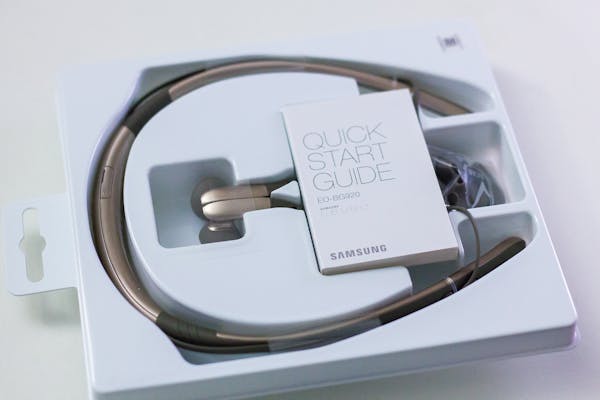TRENDnet TEW-921DAP Review: A Solid Option
[ad_1]
The TRENDnet TEW-921DAP AX1800 Dual-band Wi-Fi 6 PoE+ access point is an expensive version of the entry-level Netgear WAX214.
It does have more to offer, though, such as additional operation roles, extra SSIDs, and faster overall Wi-Fi throughputs on the 5GHz band.
Still, while for the current street price of around $150, you likely won’t go wrong with the TRENDnet TEW-921DAP, the similarly specced Netgear is a better deal, at least as a single standalone access point — it currently costs only around $90.
Neither will give you much to brag about in performance; both are modest hardware. And as wireless access points, they require a wired home with an existing router and, preferably, a PoE switch.

TRENDnet TEW-921DAP: A reliable WAP that could use a price reduction
I was hesitant to take on the TRENDnet TEW-921DAP since it had no novelty. We’re talking about an entry-level business-class local-managed Dual-band Wi-Fi 6 access point here. Plain and simple.
But since I recently reviewed TRENDnet’s new PoE switch, the TPE-TG350, it only makes sense to try something from the same vendor that can take advantage of it. And the TRENDnet TEW-921DAP fits the bill.
No power adapter or PoE injector included
Out of the box, the TEW-921DAP comes with no power adapter, nor does it include a PoE injector.
That’s the typical case of most business-class access points; vendors expect you to already have a PoE switch. If not, you’ll need to pay extra to get one.
The TEW-921DAP supports PoE+ and will work with any switches or injectors of the same or higher (PoE++) standard. I tested it mainly with the TPE-TG350 mentioned above, but it also worked well with the Zyxel XS1930-12HP — a testament to the fact active PoE devices are compatible with higher-level PoE senders.
If a switch doesn’t apply to your station, you can also get an injector, precisely like the case of the Netgear WAX214 or any PoE Wi-Fi 6 access point.
TRENDnet TEW-921DAP vs Netgear WAX214: Hardware specifications
Like the case of the Netgear WAX214, the TRENDnet TEW-921DAP is a compact Dual-band dual-stream (2×2) Wi-Fi 6 broadcaster that doesn’t support the 160MHz channel width.

Generally, a Wi-Fi broadcaster without 160MHz support has lower bandwidth — it caps at 1200Mbps of negotiated speed at best. In return, it doesn’t need to use DFS channels and their inherent issues.
| Name | TRENDnet AX1800 Dual-band Wi-Fi 6 PoE+ Access Point | Netgear WAX214 AX1800 Wi-Fi 6 Access Point |
| Models | TEW-921DAP | WAX214 |
| Standard | Dual-band AX1800 | Dual-band AX1800 |
| 2.4GHz Band | 2×2 AX: Up to 600Mbps (20/40MHz) |
2×2 AX: Up to 600Mbps (20/40MHz) |
| 5GHz Band | 2×4 AX: Up to 1200Mbps (20/40/80MHz) |
2×4 AX: Up to 1200Mbps (20/40/80MHz) |
| SSIDs | 16 (8 for each band) |
4 (collectively) |
| Wi-Fi Security | WPA/WPA2/WPA3 | WPA/WPA2/WPA3 |
| Ethernet Port | 1x Gigabit (PoE+) | 1x Gigabit (PoE+) |
| Power Supply | IEEE 802.11af/at PoE or TRENDnet 12V power adapter (No adapter or PoE injector included) |
IEEE 802.11af/at PoE or Netgear 12V power adapter (No adapter or PoE injector included) |
| Dimensions | 6.3 x 6.3 x 1.34 in (160 x 160 x 34mm) |
6.33 x 6.33 × 1.31 in (160.9 × 160.9 x 33.28 mm) |
| Weight | 1.07 lbs (486g) | 0.84 lb (0.38kg) |
| Operation Modes | Access Point Client Bridge WDS AP WDS Bridge WDS Station Repeater |
Access Point |
| Firmware Version (as tested) |
2.00b06 | 1.0.1.0 |
| US Price (at review) |
$155 | $90 |
The two share almost the same physical size, but TRENDnet has more to offer in terms of SSDs and operation roles — it can work more than just as an access point, including the ability to link with other APs as a mesh via Wireless Distribution System (WDS) protocols.
TRENDnet TEW-921DAP: Detail photos






TRENDnet TEW-921DAP: Standard setup made easier
The TRENDnet TEW-921DAP shares the same setup process as any standard PoE access point.
You first hook it to an existing network (router) via a PoE switch or an injector — as described in this post on PoE. After that, open a browser and negation to its local IP address, and you’re game.

But getting this IP address can be a bit of work — you have to figure it out via your router. And this is where the TEW-921DAP has a trick that makes things easier: Instead of the IP address, you can use its model number.
Specifically, on a local computer, enter the following on a browser’s address bar and hit Enter, and you’ll get to the AP’s web user interface:
http://tew-921dapThe access point’s default login information is printed on its underside; the default username and passwords are both admin.
Lots of Wi-Fi and operating options but no performance-oriented settings
Once you’ve gotten to the interface, everything is generally self-explanatory. The TRENDnet TEW-921DAP has a lot more to offer than the Netgear WAX214.

For example, it can work in different roles, including linking with other access points to firm a wireless system via WDS.
On top of that, you can create up to eight SSIDs per band (16 in total), each with extensive settings, including a captive portal (a.ka. splash screen), making it ideal for public places, like a cafe or a service center.
It’s worth noting, though, that despite many Wi-Fi settings, the access point has no performance-favored mode. You can only make it work for the lowest speed grade or a mixed-mode that includes all performance grades.
That said, you can’t make it support only Wi-Fi 6 clients or only the 80MHz channel width. That was a bit disappointing, though, suitable for public use.

TRENDnet TEW-921DAP: Good performance
Considering the specs, I didn’t have high expectations from the TRENDnet TEW-921DAP, and the access panned out well in my testing.
My 2×2 Wi-Fi 6 client is generally hooked to it at the 1.2Gbps negotiated speed and decent sustained rates, as you’ll see in the chart below.

For 5GHz AC tests, a 4×4 client is used for the close range and a 3×3 client for the long-range.
The TRENDnet TEW-921DAP proved to be decided faster than the Netgear WAX214 on the 5GHz band, but on the 2.4GHz, it was slightly slower.
As for the coverage, it had about the same range as the Netgear. Specifically, place it at the center of an area of 2000 ft2 (186 m2) or smaller, and you can expect decent signals at every corner. But, as a rule, your mileage will vary depending on the environment.

I tested the TRENDnet TEW-921DAP for almost a week, and the AP passed my stress test with no issues. Generally, you can expect the max broadband bandwidth of around 600Mbps from it, as can see in the screenshot above.

Pros
Reliable Wi-Fi with up to 16 separate SSIDs and captive portal support
Compact design, easily accessible web user interface
No login account with vendor required, lots of Wi-Fi settings, responsive web user interface
No login account required
Wall/ceiling mounting accessories included
Cons
No 160MHz bandwidth or Multi-Gig port, modest Wi-Fi specs and performance
No performance-favored Wi-Fi settings, no power adapter or PoE injector included
Conclusion
The TRENDnet TEW-921DAP AX1800 Dual-band Wi-Fi 6 PoE+ Access Point is not the most expensive among its peers, but it sure is not as affordable as the similarly-specced WAX214. In return, it has more to offer.
If you’re looking for a single, entry-level Wi-Fi 6 access point, the Netgear is a better deal. However, if you want to have the option of expanding your network or have better flexibility in Wi-Fi options and settings, the TRENDnet is a better choice.
In any case, this access point is only suitable for those with a wired retirement and a sub-Gigabit broadband connection. For better performance access points, check out other higher-end options instead.
[ad_2]
Source link







